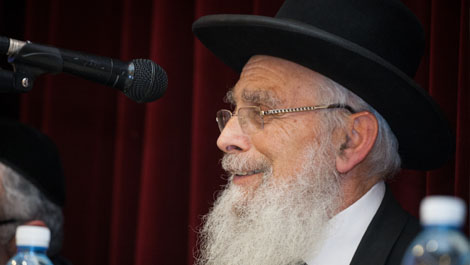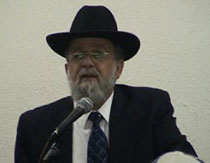Beit Midrash
- Sections
- Chemdat Yamim
- Parashat Hashavua
The gemara (Shabbat 22b) asks: "Did Hashem need the light that the kohen lit? Is it not so that throughout the forty years in the desert, it was Hashem who provided light for the nation? Rather, this was evidence to the world that the Divine Presence dwelled in Israel."
Let us take a look at the special characteristics of this mitzva and thereby get a better idea of what is needed to have the Divine Presence dwell among us. Elsewhere in the Torah (Shemot 31:8), the menorah is referred to as the "pure menorah." The purity of the oil that is placed into the menorah is also something that runs deep in our Jewish consciousness from the Chanuka story, as the miracle of the lights that continued burning was to deal with the situation where there was a shortage of pure oil. This concern was particularly appropriate against the backdrop of the spiritual conflict between the Jews and the Greek Hellenists and their culture of aesthetics.
The menorah is, to a great extent, the symbol of spirituality. One indication is that the navi, Zecharia, was shown in a dream a special vision based around a menorah to represent that which he was told, "Not with masses or with strength but with My spirit, said Hashem" (Zecharia 4: 2-6). Candlelight also represents Torah and mitzvot, as we know from the famous pasuk in Mishlei, "For a mitzva is a candle, and Torah is light" (6:23). Of course, light can be used for qualitatively different things, and therefore Mishlei also says: "The light of the righteous is happy, and the candle of the wicked will flicker" (13:9) and "Haughty eyes and a proud heart: the candle of the wicked is sinful" (21:4). The light of the menorah within the Mishkan is also a symbol of wisdom, as finds expression in Chazal’s statement that "he who wants wisdom should go to the south, for the menorah was in the south" (Bava Batra 25b).
There is an important message to learn from the special connection between the motifs of spirituality, wisdom, purity and the dwelling of the Divine Presence that they usher in. An outlook of aesthetics and philosophical musings, even if people feel that it elevates them beyond coarse physicality, does not suffice for the Nation of Israel. A "lighting of lights" in a manner that invites the Divine Presence requires a high level of the type of purity that leads to sanctity. How appropriate is it that the author of the saying that "purity leads to sanctity" was named "Rabbi Pinchas ben Yair" (his father’s name meaning, will give light).

Parashat Hashavua: What’s in the Name of Noach?
Rabbi Yossef Carmel | Cheshvan 5786

Parashat Hashavua: A Yeshiva and a Community Go Together
Rabbi Yossef Carmel | kislev 5785

Song of the Deciders of World History
Rabbi Shaul Yisraeli zt"l | Shvat 11 5776






















